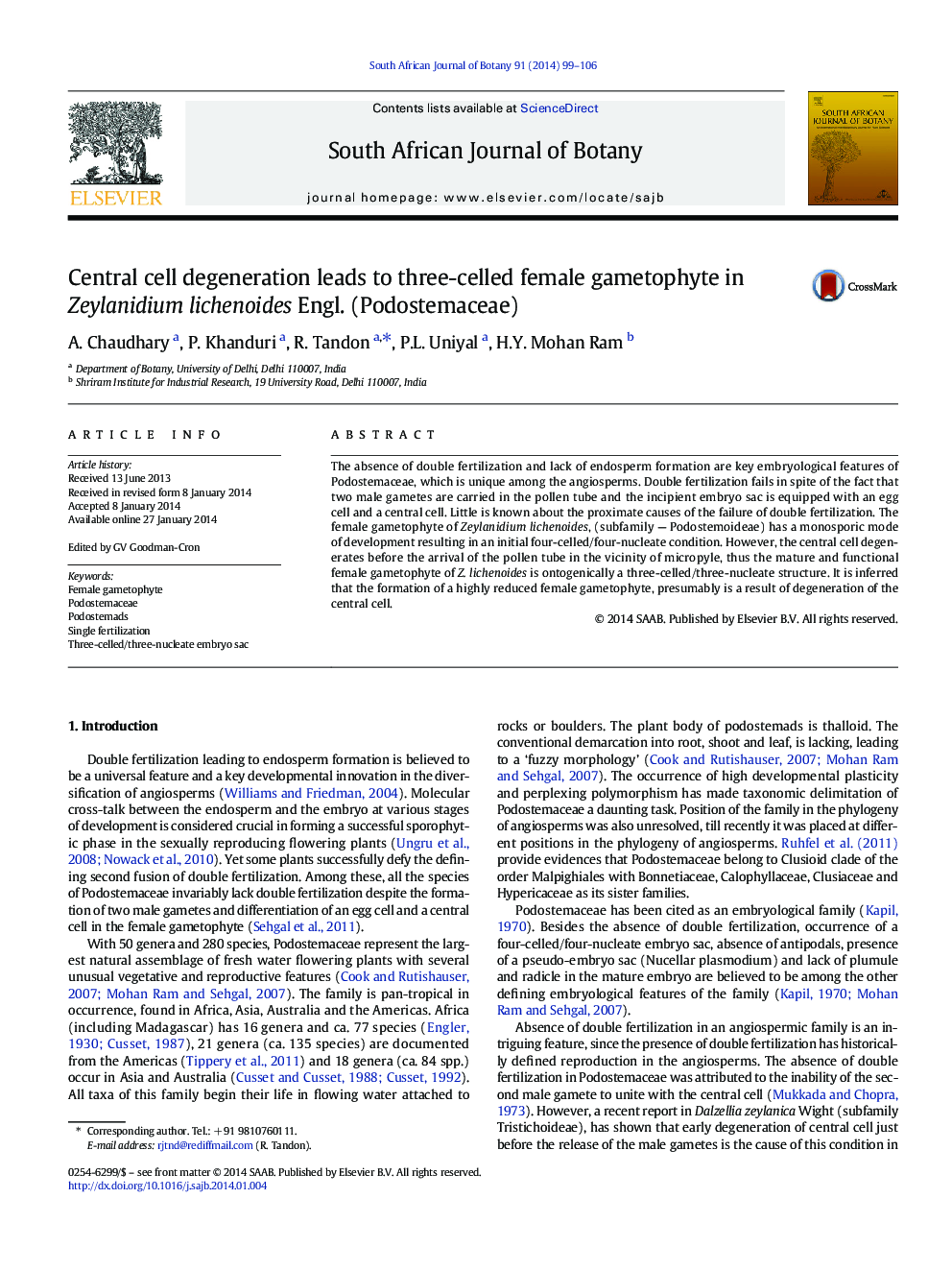| Article ID | Journal | Published Year | Pages | File Type |
|---|---|---|---|---|
| 4520619 | South African Journal of Botany | 2014 | 8 Pages |
•Megagametophyte of Zeylanidium lichenoides is monosporic, Apinagia‘b’ type.•The embryo sac is a three-celled/three-nucleate due to central cell degeneration.•The central cell degenerates before syngamy.•Double fertilization and endosperm formation are absent in the species.
The absence of double fertilization and lack of endosperm formation are key embryological features of Podostemaceae, which is unique among the angiosperms. Double fertilization fails in spite of the fact that two male gametes are carried in the pollen tube and the incipient embryo sac is equipped with an egg cell and a central cell. Little is known about the proximate causes of the failure of double fertilization. The female gametophyte of Zeylanidium lichenoides, (subfamily — Podostemoideae) has a monosporic mode of development resulting in an initial four-celled/four-nucleate condition. However, the central cell degenerates before the arrival of the pollen tube in the vicinity of micropyle, thus the mature and functional female gametophyte of Z. lichenoides is ontogenically a three-celled/three-nucleate structure. It is inferred that the formation of a highly reduced female gametophyte, presumably is a result of degeneration of the central cell.
